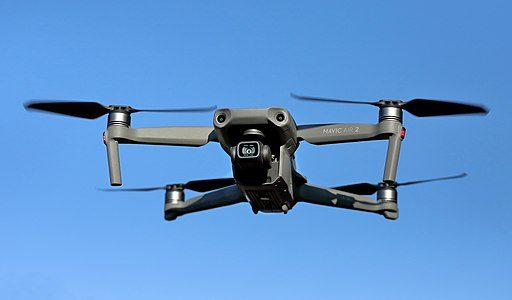The GAO highlights operational challenges, while DJI advocates for a balanced approach to drone regulation.
A new report from the U.S. Government Accountability Office (GAO), titled “Federal Lands: Effects of Interior’s Policies on Foreign-Made Drones” (GAO-24-106924), reveals the significant impact that restrictive drone policies have had on the Department of the Interior’s (DOI) operations. In response, DJI, a major drone manufacturer, expressed concerns about these restrictions, emphasizing the consequences of limiting drone use and procurement based on country of origin rather than technological capability.
GAO Report: Key Findings on DOI’s Drone Challenges
The GAO report underscores how the DOI’s reliance on drones has been critical for managing its 500 million acres of federal lands. Drones have been used for tasks such as wildfire prevention, search and rescue, and scientific research. However, since 2020, the DOI has faced challenges due to restrictions on drones manufactured in “adversary nations,” grounding non-emergency flights for nearly three years. Although recent exemptions now permit drone use for emergency operations, the overall prohibition remains in place.
According to the GAO, these restrictions have significantly affected DOI operations in several key areas:
- Aging Drone Fleet and Rising Costs: The majority of DOI’s drone fleet is nearing the end of its lifespan. Replacing these drones with compliant alternatives has proven difficult due to escalating costs and limited availability. The average cost per drone has risen from approximately $2,600 in 2017 to over $15,000 in 2023.
- Operational Limitations: The shrinking number of drones has limited DOI’s ability to expand their use for critical operations, such as wildfire response and search and rescue. DOI has had to rely on more costly and riskier alternatives, like helicopters, which increase safety risks to personnel.
- Technological Gaps: Compliant drones often lack the technological capabilities needed for specific tasks, such as carrying specialized sensors. Some compliant models have also experienced reliability issues, such as propeller malfunctions.
The report also highlights the loss of opportunities to gather crucial data on wildlife, landscapes, and infrastructure, as the DOI’s ability to collect high-resolution imagery has been impaired by drone shortages.
DJI’s Response: A Call for Balanced Drone Policies
DJI, the world’s largest drone manufacturer, was quick to respond to the GAO’s findings, stressing that the restrictions imposed on drones based on their country of origin have undermined the DOI’s ability to fully leverage the benefits of drone technology. In a statement, DJI noted: “The GAO findings also reaffirm our concerns: without a balanced approach, the U.S. risks losing vital tools that protect lives and property.”
DJI emphasized that its drones have been instrumental in supporting DOI’s efforts, particularly in emergency situations like wildfire management. The company also pointed to previous assessments, including a 2021 Pentagon report, which found no evidence of “malicious code or intent” in DJI’s Government Edition drones. The report even recommended their use by government entities, further supporting DJI’s argument for allowing technology-based rather than country-based drone regulations.
Diverging Views: Operational Concerns vs. Security Considerations
While the GAO report focuses on the operational setbacks the DOI has faced due to restrictions on foreign-made drones, DJI’s response highlights the company’s commitment to addressing security concerns while providing critical technology. DJI advocates for the creation of industry-wide security standards that are based on technological safeguards rather than the country of origin.
In its response, DJI also reiterated the importance of maintaining an open and competitive marketplace where drone operators have the freedom to choose the best tools for their missions. According to DJI, “A free, open and competitive marketplace ensures that the best technology thrives, benefiting the entire ecosystem of operators and public safety organizations.”
A Path Forward: Policy Recommendations and Industry Collaboration
Both the GAO and DJI agree on the importance of drones in DOI’s operations, but the GAO report highlights the pressing need for compliant drones that can meet the DOI’s mission-critical needs. DJI, on the other hand, calls for an evidence-based approach to future drone legislation, arguing that limiting drone use based on country of origin restricts access to the most effective technology.
As policymakers consider new drone regulations, DJI continues to advocate for balanced policies that prioritize technological capability and security without restricting the competitive landscape. The GAO report, alongside DJI’s response, underscores the importance of collaboration between government agencies and industry stakeholders to ensure that critical missions, such as wildfire prevention and search and rescue, are not compromised.
For more details, you can access the full GAO report here and DJI’s original blog post here.
Read more:


